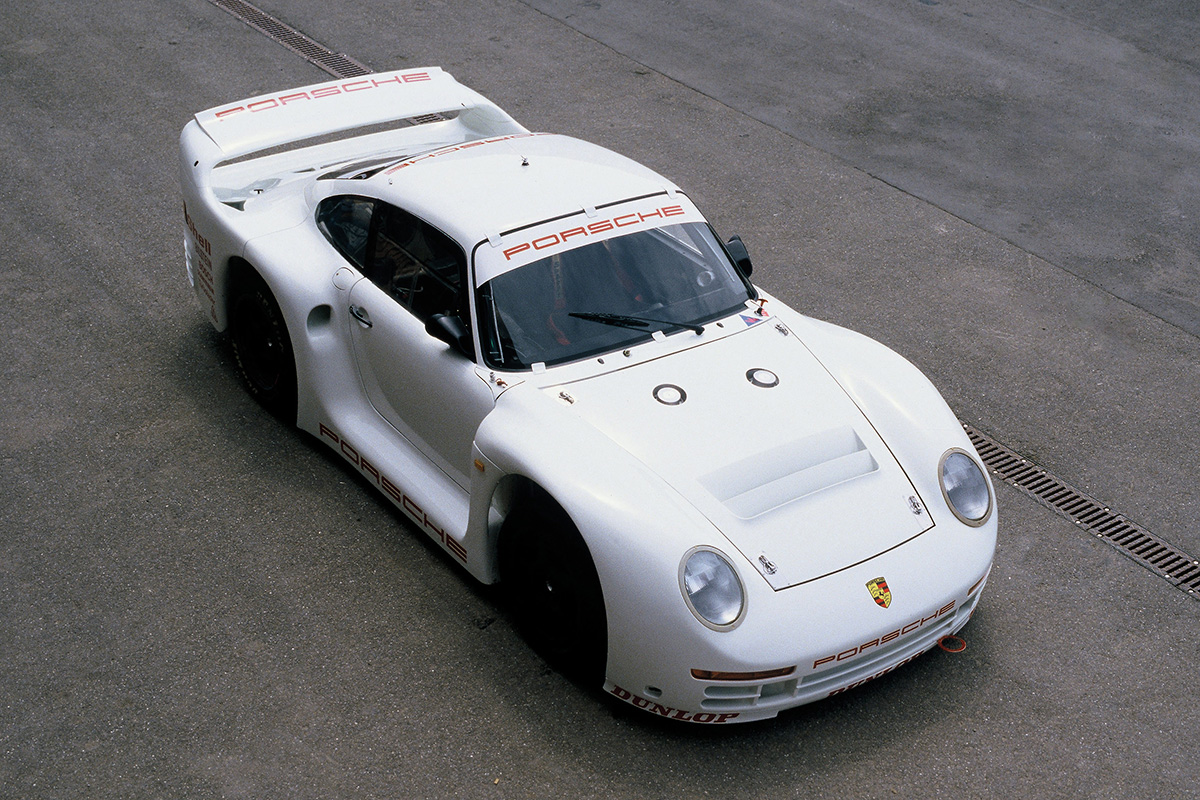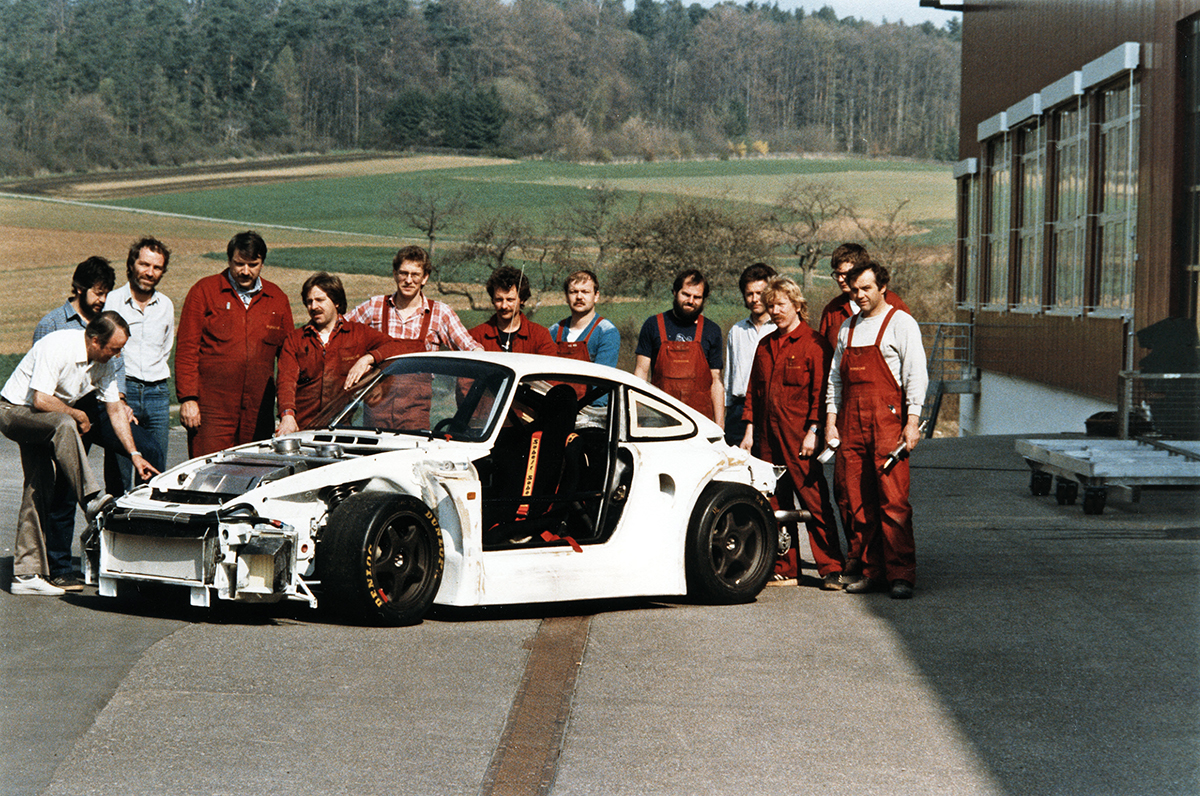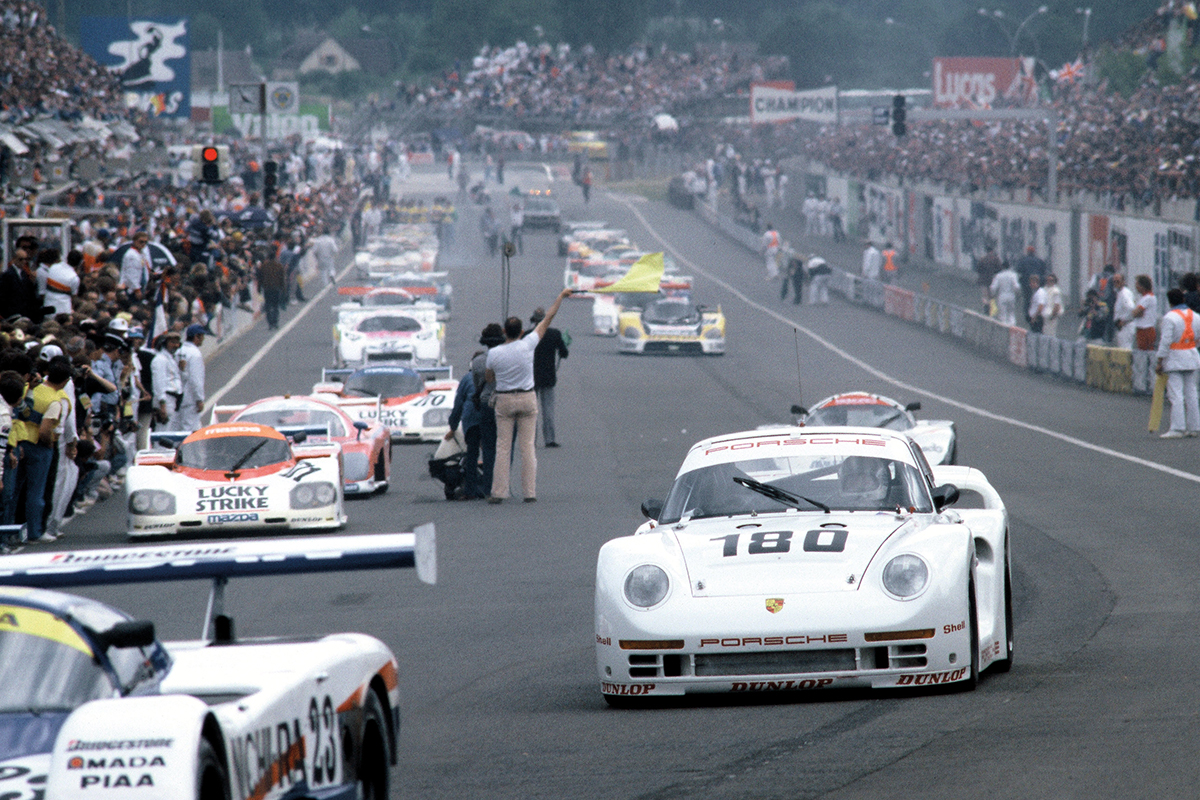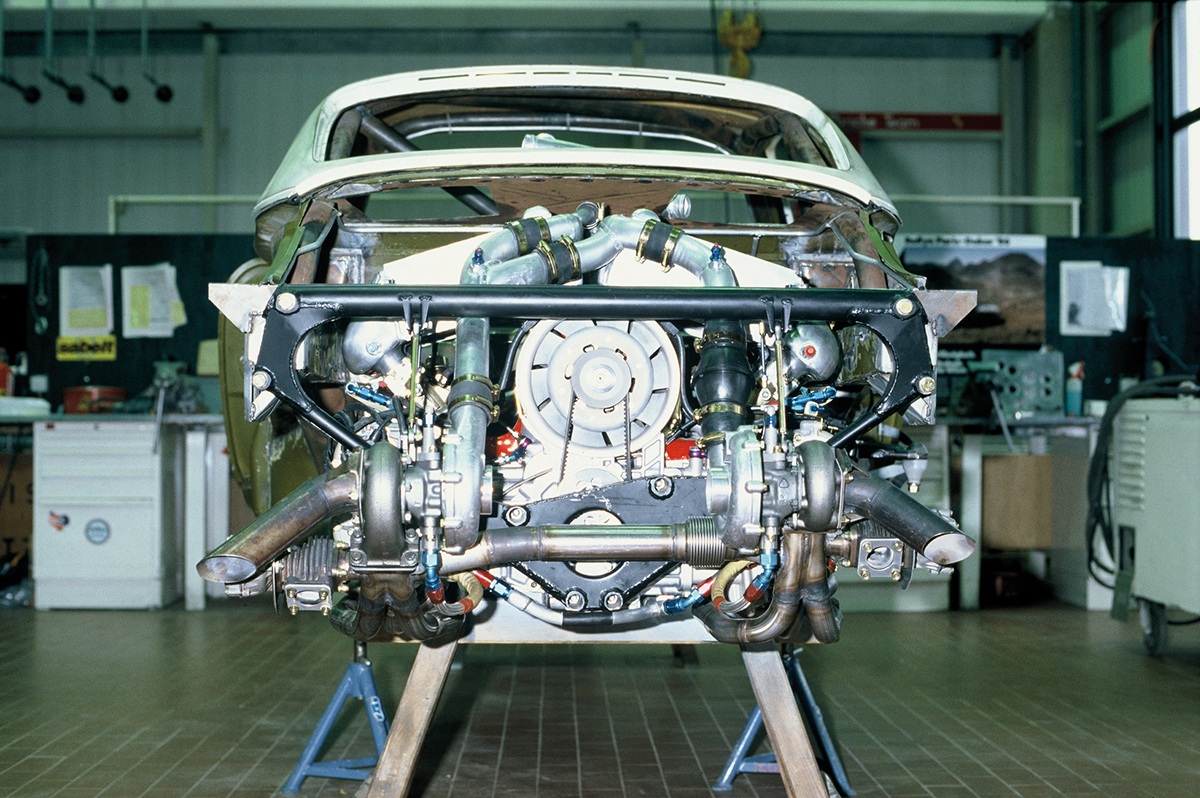With April's Porsche Post featuring French racing polymath Claude Ballot-Lena and the June issue's cover story focussing on Group C, it feels like a good moment to revisit one of Porsche's most singular and underreported racers: the 961.
This is the car that Ballot-Lena and teammate Rene Metge would race alongside the 962s at Le Man in 1986 as a full works entrant. But, while the Rothmans-liveried factory prototypes were gunning for overall glory, the single, stark white 961 - the only entrant that year in Le Mans' 'Grand Touring Experimental' GTX class - was performing a very different role for Porsche.

The 1980s saw rapid technological advancement across the automotive industry and nowhere more so than at Porsche, where huge strides were being made on both road and track. CEO Peter Schutz had signed off development of the 959 in 1981, with chief engineer Helmuth Bott identifying the arrival of Group B rallying the following year as the perfect test bed for a future-proof Porsche sports car. The technology of most interest to Bott and his team was all-wheel drive.
Porsche-Steuer Kupplung (PSK), translating roughly to Porsche Clutch Control, was an electronically controlled four-wheel-drive (4WD) system that improved considerably on existing designs with a multi-plate clutch instead of a central differential, allowing for variable and continuous torque to all four wheels. Up to 80 per cent of torque could be sent to the rear wheels, but the car was also capable of a perfect 50:50 front-to-back division. Sensors monitored lateral forces, throttle, steering angle and boost pressure to determine the ideal split, while the driver had the option to choose between four different 4WD modes. It was ingenious, devilishly complicated and extremely effective. The unprecedented ability to control torque distribution during normal driving conditions as well as through wheel slip would prove to be a boon for race and road car alike.
Initial trials began in a lightly modified G-Series, internally coded Type 953, that went on to win the Paris-Dakar Rally on debut in 1984, driven by none other than Rene Metge. Two years later, the 959 would go one better, with Metge and Jacky lckx completing a famous one-two victory that underlined the car's readiness for production and an assault on the World Rally Championship. But, following a number of high-profile fatalities, Group B was cancelled at the end of the '86 season, leaving the 959's competitive programme over before it had really begun.

The last hurrah would come from the track-only 961, which Porsche had been quietly preparing for Le Mans in 1986. As the only car with 4WD to have entered the 24 Hours at the time, and for several decades to follow, the ACO obligingly revived the GTX class to allow it to run, guaranteeing Porsche a class win if the car could but stay the distance.
The 961 shared its basic engine design with the 959, but was modified by Valentin Schaffer to meet the ACO's demands. The GTX class ruling stipulated that the engine's block would need to be of 911 origin, so Schaffer created a bespoke water-cooled head for each bank of cylinders to cope with the extra power. The 2.8-litre twin turbo-charged flat-six made 640bhp in race trim, detuned from a 680bhp maximum but still some 200bhp more than the road car would enjoy. The body was extensively modified, with greater downforce achieved through increased underbody aero and a larger, adjustable rear wing. New resin body panels were formed to allow for a wider track and slick-shod Speedline wheels. High-performance brake discs were purloined from the 956 and cooling improved for both engine and gearbox with additional inlets. Overall weight, despite the complexity of its underpinnings, was around 1100kg.

In the race, Porsche's preparedness to risk humiliation paid dividends. The 961 qualified an unremarkable 26th, almost half a minute off the works 962s that had locked out the front row but, during the race, the advantages of the PSK began to reveal themselves. Le Mans gearing meant a theoretical top speed of 213mph, but the 961 was also quick through the corners despite lacking the ground effect enjoyed by the Group C cars. Little by little, Metge and Ballot-Lena began to assert themselves on the race, small fish as they were in a very big pond.
Some 2 7 starters failed to make the chequered flag at Le Mans in 1986, including two works 962s, several privateer 956s and all of the Silk Cut Jaguars and Mercedes-powered Sauber C8s with their galleries of elite drivers. Meanwhile, the veteran French pairing, aged 45 and 50 respectively, went quietly about their business in the 961. They finished seventh overall and beat five Group C prototypes in the process, two of which were Porsches.
After Le Mans, Porsche took the car to America for a three-hour race at Daytona in the IMSA Sporcscar. Tyre degradation saw it finish a disappointing 24th in the hands of Gunther Steckkonig and young Canadian Kees Nierop, after which the decision was taken to focus exclusively on the next staging of Le Mans.
In 1987, the 961 arrived at La Sarthe wearing the Rothman's livery and a new driver line-up saw Metge joined by Nierop and long-standing Swiss privateer Claude Haldi. Power was up to 680bhp, PSK and aerodynamics were further enhanced and its rubber wider still. Drive shaft problems initially hampered progress, but the presence of all-wheel drive enabled it to limp back to the pits on more than one occasion and make it through the night. In the early hours of the morning, however, Nierop missed a gear and locked the rear wheels, sending the car into the barriers at Indianapolis on its 199th lap. Although the car remained driveable, the damaged bodywork caught fire en route to the pits and Nierop was forced to bail out as the one and only 961 went up in flames.

The car was later rebuilt to 1987 specification and placed in the Museum, its legacy a new range of 4WD Porsche road cars beginning with the 964 Carrera 4 in 1989. Tellingly, it was not until 2012 and the advent of LMPl that a car equipped with 4WD would win the 24 Hours.